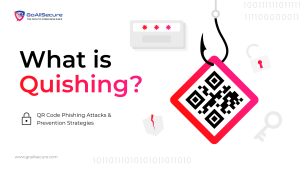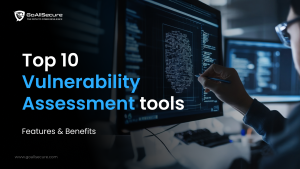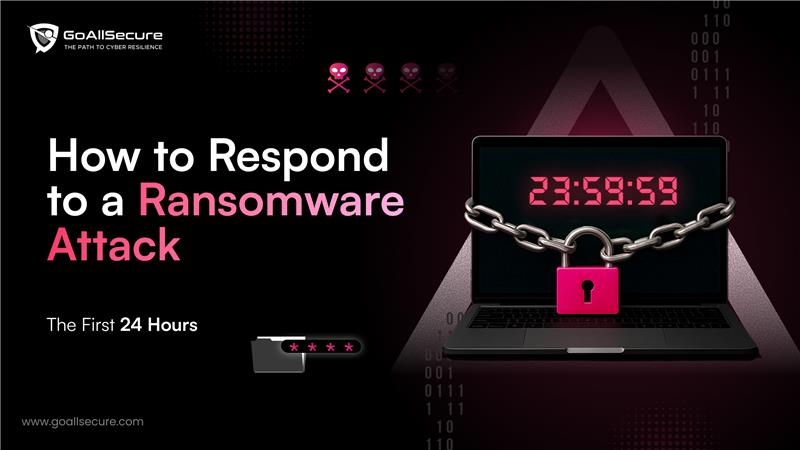What first seems like a normal day soon falls apart. You turn on your computer and start reading emails or opening files—then something weird happens. Files won’t open. The system fails. A terrifying message suddenly flashes: your data is locked; paying a ransom is the only way to get back in.
The countdown starts right now, right here!
Ransomware attacks are full-scale crises that can compromise operations, expose private data, and permanently damage your company’s reputation—not limited to IT mishaps. Your answers over the first twenty-four hours are vital. This small window usually decides whether your company can contain the damage or spiral into operational anarchy. Legally, financially, and practically, these are survival hours. This blog will show you how to handle the crisis properly in the initial hours.
What Should One Do During the First Twenty-Four Hours?
The answer to the above-stated question is a complex one. There is so much uncertainty involved when it comes to ransomware attacks. But there are a few things that you and your company can control preemptively. Here is what you should do:
Understanding the Attack: From Confusion to Control
Usually, the first reactions are confused and chaotic. Systems come to a stop. Workers are locked out of shared files or emails. Some people might find dubious messages asking for Bitcoin. Others in a state of panic may restart systems or unintentionally interact with the threat.
This is when composure counts most. Understand what is happening—this is a ransomware attack. Reacting without a clear plan or impulsively can inflict even more damage. Right away, cut off impacted systems from the network to stop it from spreading further. Each second counts, especially when ransomware spreads laterally across endpoints.
First Comes Containment
Once the breach is verified, physically—if necessary—disconnect compromised systems from the network. To stop contamination, suspend VPNs, cloud syncs, and shared drive access. Act carefully, though; sudden closures can interfere with evidence collecting or induce partial encryptions that complicate recovery.
The aim is to surround and restrict the spread of the malware by quarantine. Even if only a small number of machines exhibit symptoms, assume others might be quietly compromised. This is when security and IT teams enter investigative mode—observe, record, and plan instead of rushing to fix.
Engage Your Incident Response Team
An organisation must coordinate quickly. Turn on the incident response team right away if one exists. If not, create an emergency group comprising legal advisers, communications staff, IT leads, and cybersecurity experts. Assign tasks including handling internal communications, law enforcement coordination, containment, and recovery planning.
Consult outside vendors, including digital forensic partners, cyber insurers, or MSSPs. Many delays arise from companies unsure of who to call or what their insurance covers. Keep to your response plan if one exists. If not, answer strategically and cooperatively.
Save Data and Look at the Hacker
Although the need to clean systems completely is understandable, it could impede your recovery. Before any repair, forensic experts must compile disc pictures, system logs, memory data, and indicators of compromise. Preventing future events depends on knowing where the entrance point is, RDP vulnerabilities, a phishing scam, a hacked plugin, or another entirely different approach.
This is the moment to evaluate the extent of the attack. Ask yourself and your teams the following questions. Among the servers, which are encrypted? Is sensitive information at risk? Are backups still intact? Have attackers created backdoors or raised rights (privilege escalation)? Although these questions take time to answer, early research increases the chances for recovery.
Internal Communication: Calm, Clear, and Controlled
Silence during a crisis will only fuel rumours. Workers will see something is off; thus, internal updates have to be open and quantified. Tell teams the problem is under control and discourage efforts at either fixing or interacting with dubious content on their own.
Remind employees not to click links for a ransom or reply to dubious emails. At this point, they could either unintentionally exacerbate the threat or help to contain it. One needs visibility in leadership. A calm executive voice helps one to relax and boost confidence.
Work with Legal Counsel to Address Compliance
Legal teams should be called upon to evaluate reporting responsibilities once containment starts. Personal or regulated data breaches will need to be reported within tight deadlines, say 72 hours under GDPR. Should customer or staff data be involved, create explicit, compliant notification strategies to help prevent fines or negative effects on reputation.
This also is the time to let your cyber insurance company partner. Policies sometimes call for specific vendors and techniques for forensic investigation and ransom negotiations. Early participation guarantees eligibility and speeds up your reaction time.
Dealing with the Demand for Ransom
You most certainly have read the ransom note by now. It might call for cryptocurrencies, endanger data leaks, or set counters. Emotions run strong; one is under pressure to rebuild systems and worries about exposure.
Law enforcement counsels against paying since it provides no guarantees and funds criminal activity. Still, actual pressures—especially in sectors like finance or healthcare—can force companies to give it some thought. Before deciding anything, confer with forensic investigators, insurance companies, and legal counsel.
Hiring a negotiator—even if money is not taken into account—can be beneficial. While your teams try to recover, they could buy time, compile data, and help to ease the pressure.
Starting the Healing Process
Once the ransomware is contained and safe backups are accessible, recovery can start. But rebuilding safely is more important than merely recovering files. Restoring data alone without dealing with the underlying cause invites reinfection.
Your recovery should be phased: first restore less important operations, then give top priority to key systems, verify integrity, and track for unusual activity. Change endpoint security, apply multi-factor authentication, segment networks, and reset all administrator passwords.
The phase of recovery post-attack will call for firm leadership. Morale may be damaged, and rebuilding confidence depends on openness. Share improvement and demonstrate your dedication to more robust defences.
Beyond First Day: Building for the Future
The immediate risk might have passed after 24 hours, but the response goes on. It can take days and weeks before the forensic investigation is complete. It will be followed by system notifications, audit trails, security enhancements, and policy-related changes. The strongest companies are those that react quickly, orderly, and with solidarity rather than those that avoid attacks. Your reaction in those first crucial hours will determine whether a ransomware attack turns into a disaster or a driver for change.
Your security systems will need hardening; staff will need retraining. GoAllSecure can assist you with rebuilding and creating cyber resilience. We have some of the top cybersecurity solutions available for you and your business. We prioritise ransomware prevention, email security, and staff training to provide all the cyber defences you need to stay competitive. Our goal is to protect your digital assets from emerging and changing threats. Do you need assistance enhancing the security of your business? Contact GoAllSecure at +91 85 2723 7851 or +44 20 3287 4253 to learn more about our ransomware security solutions.
FAQs
1. During a ransomware attack, what should be the first step?
Right away, disconnect impacted systems from the network. Though time is of the essence, make sure the systems are kept intact for the next steps, like investigation and reporting.
2. Do we have to pay the ransom?
Although it is typically discouraged, the decision hinges on the impact on operations and the availability of backups. Seek legal and insurance aid first always.
3. Can ransomware ascend to the cloud?
Yes. Cloud files can also be encrypted if infected systems sync with Google Drive or OneDrive. Make use of offline backups, versioning, and access restrictions.
4. Who needs to be notified?
Notify right away the teams in legal, HR, communications, executive leadership, and IT. To coordinate a clear response, everyone has to know their part.
5. How long is the recovery phase after a cyber incident?
It fluctuates. Because of validation, cleanup, and rebuilding, even small attacks can take weeks to clear. Recovery is about confidence restoration, not only about technical aspects.


















 TRAVEL & HOSPITALITY
TRAVEL & HOSPITALITY HEALTHCARE
HEALTHCARE RETAILS & ECOMMERCE
RETAILS & ECOMMERCE BANKING & FINANCIAL
BANKING & FINANCIAL AutoMobile
AutoMobile MANUFACTURING
MANUFACTURING FOOD
FOOD EDUCATION
EDUCATION







